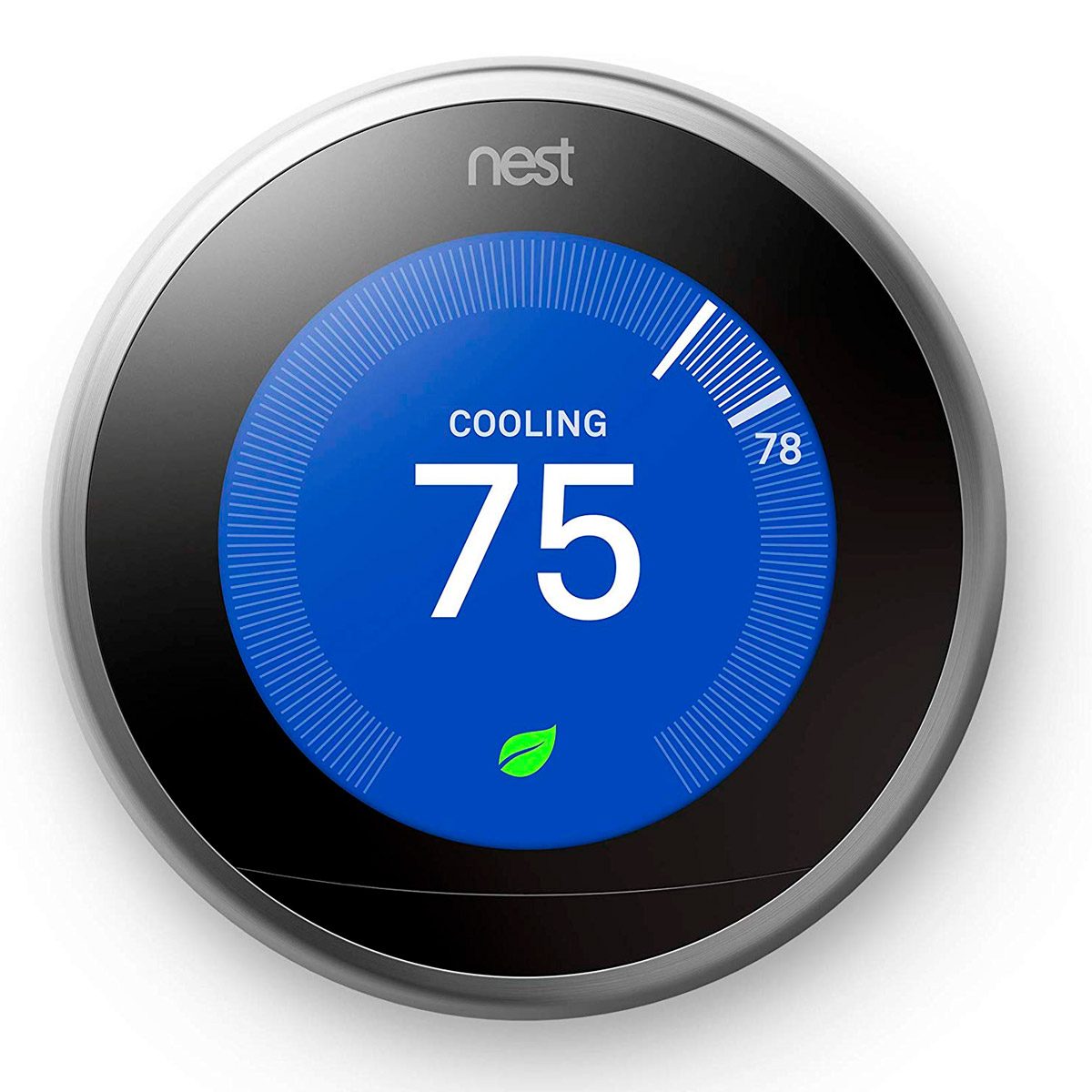The Nest Thermostat can help save money on heating and cooling costs while keeping your home cozy.

What to Know About the Nest Thermostat

The Nest Learning Thermostat was one of the first smart home devices widely accepted by homeowners. Back in 2011 when it debuted, many people didn’t even have a smartphone, let alone smart home tech.
Today, Nest is a part of Google (after a merger in 2018), and their smart thermostat continues to evolve.
On This Page
What Is the Nest Thermostat?
The Nest Thermostat works like a normal thermostat with extra features. It connects to your home’s internet network through WiFi and can be controlled by an app on your phone.
As the Nest Thermostat evolved, it got smarter, adding a 40 percent larger display and new features that keep a home comfortable while saving money. The Nest Thermostat is on its third generation and has saved over 56 billion KWh of energy, according to Google.
How Does the Nest Thermostat Work?
The Nest Thermostat is constantly adjusting, learning and adapting. Once you used your thermostat for a while, it learns how warm or cool you like your home at certain times of the day. Then it will set up a schedule that adjusts the temperature automatically to match your needs. This process takes about a week.
It also knows when you are home and when you’re not. When you’re away, it will adjust the cooling or heating to save money on your utility bill.
The Nest Thermostat also learns how your home’s system cools and heats, and when the weather changes automatically adjusts to match the system’s needs. This means your home will remain at a comfortable temperature no matter what Mother Nature throws at it.
This thermostat also has a visual cue that can help you save. When setting the thermostat, a leaf will pop up on the device or in the app when you choose a temperature that is economical and saves energy.
Why Use the Nest Thermostat?
The answer is simple: The Nest Thermostat can help you save on your energy costs while keeping your home cozy. It will also keep you informed and help track your energy usage.
Want more? Here are additional benefits of using a nest thermostat.
Saving With the Nest Thermostat
Just how much can switching from a regular thermostat to a Nest Thermostat save you? “On average, the Nest thermostat saved U.S. customers about 10 to 12 percent on their heating bills, and about 15 percent on their cooling bills,” Google states on its website. “We’ve estimated average savings of $131 to $145 a year, which means the Nest Thermostat can pay for itself in under two years.”
How Much Does a Nest Thermostat Cost?
The third generation Nest Thermostat costs around $199 and comes in seven colors. That’s mid-range compared to other smart home thermostats, which typically run from $170 to $250. The Nest E is a less expensive alternative at $169, but it only comes in white and has fewer features.




















